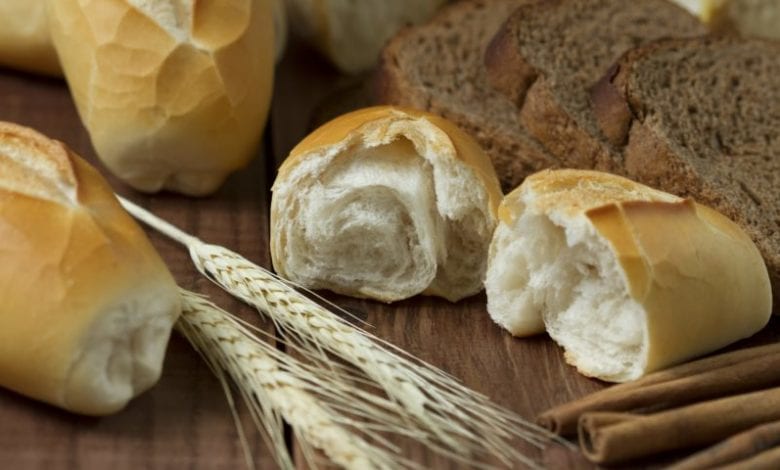What’s fresh in the bread scene

Register to get 1 free article
Reveal the article below by registering for our email newsletter.
Want unlimited access? View Plans
Already have an account? Sign in
In recent years, health has become a key factor for bread purchasing, driven by consumers becoming more conscious of what actually goes into their favourite loaf and how certain ingredients and different types of carbohydrate affect their bodies.
With the growing trend of plant-based diets and increasingly more people opting for gluten-free lifestyle, health-conscious shoppers have become well informed and consistently seeking out authentic brands and products that cater for their preferences – which creates an opportunity for new entrants to capitalise on this new ‘conscious’ demand.
Bread has been an integral part of our diet for thousands of years and was one of the catalysts for nomadic hunter-gatherers to settle down and start growing crops. Today, the UK bakery market is worth a staggering £3.6bn and is one of the largest categories in the global food industry.
However, look beneath the surface to analyse the detail and you will see how the performance markers behind the bread market have changed over the last few years. People are consuming less traditional sliced bread, despite the average cost per loaf being at an all-time low. This could be due to a number of factors, such as the fear of carbs and white sliced being pigeonholed as ‘fattening’ and full of empty calories, or it could just be as simple as people now understanding that the average loaf contains nothing substantially nutritious at all!
Not to mention the alarming amount of bread households – due to it being so cheap and disposable – thrown out each week. The consequence is that big bakeries are feeling the pinch with the double whammy effect of reduced volume and value impacting their profits.
As a result, we’re witnessing the bakery scene respond to this shift in consumer awareness with products that help to solve diverse dietary needs, remove unnecessary additives whilst also creating something that gets the all-important taste buds tingling. The success of sourdough and emerging craft and artisan bread scene is testament to the fact we haven’t lost our appetite for bread, but that tastes and preferences are moving towards the innovative and nutritionally complete.
Reformulating traditional techniques, which reflect the origins of how bread was made by our ancestors, are being found to add value to the end product, justifying the higher costs. Instead of mass production driven by least-cost efficiencies to make a product that is devoid of nutrition and full of water and air, bakers are turning back to the past for their answer to the future. As anyone that has made real bread at home will attest, using quality ingredients that create amazing flavours and aromas always gets the family and neighbours attention!
Here at Vegbred, we’re on a mission to educate the nation that bread can be veg-packed, nutritious and delicious – in whatever format you enjoy it in. As a result, we’ve explored the top food trends to look out for in 2019 and how they might influence bakery…
Plant-based
Plant-based diets are becoming more popular by the minute, demonstrated by a 360% increase in vegans in Britain over the past ten years and a massive surge in this trend since #Veganuary launched in 2018. We’re witnessing a surging trend for plant-based alternatives as a result of growing consumer awareness and conscience of where their food comes from, as well as the scientifically researched facts that eating a diet richer in plant-based foods is better for your health and the environment. Plant-based means no animal products can be used in the bakery process. There are unsurprisingly lots of egg and dairy-based ingredients in baked goods, so removing these is an opportunity to reach a new audience.
Gluten-free
Sales of alternative baking ingredients, including gluten-free options continue to rise as more consumers understand the relationship between eating products with gluten in and how their body feels when they reduce or remove it. This ‘awareness’ is often a gateway to removing other ingredients such as lactose (dairy).
Sports nutrition
It’s not just how foods designed for athletes have become accessible for consumers (whey protein and supplements), but that shoppers want ‘all natural’ products that can help them in their performance/fitness/wellness goals as they become more nutritionally literate and understand the importance of their ‘macro and micro’ intake on their energy levels and recovery.
Digestive wellness “gut-health”
In the last year, the quality and volume of research and useful information on gut health has taken the internet by storm. Whether driven by an increase in understanding of how the gut ‘microbiome’ ultimately determines our health and wellbeing, or by consumers following the low FODMAP diet, this has translated into demand for pre and probiotic foods, such as fermented food and drinks and of course has put the increased consumption of vegetables firmly back on the menu.
Good carbs – bad carbs
Research is now building a broad insight into how different forms of carbohydrates effect the body. From simple sugars at one end of the scale to ‘complex carbs’ at the other, the difference in how each type of carb effects the body is all in the detail. Non-grain, vegetable-based ‘resistant starches’ release their energy (glucose) at a slower rate and contain more fibre than ‘brown carbs’, wholegrains or simple sugars. This means breads made with vegetables can satiate appetite, maintain steady blood sugar levels and reduce insulin resistance compared to other forms of carbohydrate in traditional breads. This news is good for diabetics, people following a low carb diet or active people who want foods that sustain them for longer.
Jon Barfoot is co-founder of Vegbred, a 100% natural bread made with fresh sweet potato.







